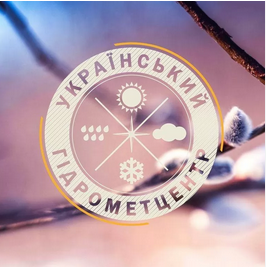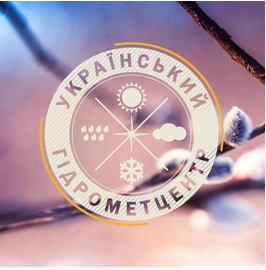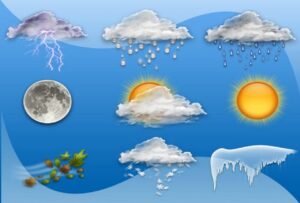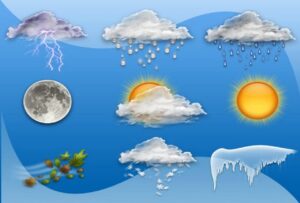
In the south and south-east of Ukraine on Monday, February 3, moderate wet snow and rain, in some places sticking wet snow, in the rest of the territory in some places light snow, reported Ukrhydrometcenter.
The roads are icy in places. The wind is predominantly north-western, 5-10 m/s.
The temperature at night 0-5° frost, in the Carpathians 4-9° frost, in the southern part, during the day in Ukraine from 2° frost to 3° warm, in the Crimea 2-7° warm.
In Kiev on Monday in places a light snow. The wind is north-westerly, 5-10 m/s. The temperature at night 1-3° frost, in the daytime about 0°.
According to the Central Geophysical Observatory named after Boris Sreznevsky. Borys Sreznevsky, in Kiev on February 3, the highest temperature during the day was 12.3 in 2002, the lowest at night -26.8 in 2012.
On Tuesday, February 4, in Ukraine in places a light snow, at night in the south-eastern part of moderate snow.
On the roads in some places icy. The wind is north-western, 5-10 m/s.
The temperature at night 3-8° frost, during the day from 4° frost to 1° warm, in Transcarpathia 0-5° warm; in the Carpathians at night 9-14° frost, during the day 1-6° frost.
In Kiev on Tuesday there will be light snow in some places. The wind is north-westerly, 5-10 m/s. The temperature at night 3-5° frost, during the day 0-2° frost.

A little wet snow and rain is expected on Monday night, January 6, in western regions, and in the afternoon throughout Ukraine, according to Ukrhydrometzetr.
On the roads of the country, except for the south, in some places icy. The wind is southern, 7-12 m/s, in the west, in the afternoon and southern regions in some places gusts of 15-20 m/s.
Temperatures at night 3-8° frost; during the day from 1° frost to 4° warm, in the Carpathian region, in the Crimea and most of the southern regions 4-9° warm.
In Kiev on January 6, there will be no precipitation at night and light wet snow and rain during the day. The wind is southerly, 7-12 m/s. The temperature at night 4-6° frost, during the day 0-2° warm.
According to the Central Geophysical Observatory named after Borys Sreznevsky, in Kiev for all the time of meteorological observations, the highest temperature on January 6 was recorded in 1988 at 9.8° of heat, the lowest in 1935 at 30.8° of frost.
Tuesday, January 7, in Ukraine without precipitation, only in the eastern and northeastern regions at night a little wet snow. On the roads of the country, except for the south, in some places icy. Wind south, southwest, 7-12 m/s.
Temperatures at night from 4° warm to 1° frost; in the daytime 4-9° warm, in southern regions and in the Carpathian region 7-12°. In the Carpathians without precipitation, daytime temperature 0-5° warm.
In Kiev on January 7, no precipitation. The roads are icy in places. The wind is south, southwest, 7-12 m/s. The temperature at night 0-2° of heat, during the day 6-8°.

On Thursday, November 21, moderate snow is expected in western regions of Ukraine at night and in some places light snow in the afternoon, reports Ukrhydrometcenter. The temperature at night 0-5 °, in the Carpathians up to 8 ° frost, in the afternoon about 0 °.
In Zhytomyr, Kyiv, Chernihiv, Vinnitsa and Cherkassy regions, wet snow and rain, heavy precipitation in some places at night, sticking wet snow. The temperature at night and during the day is 0-3° of heat. In the rest of the area moderate, in some places heavy rains. Temperatures are 5-10° warm at night, up to 14° in Crimea, 7-12° during the day, 13-18° in the south-east of the country. In the western, most northern and Vinnitsa regions there is icy road ice on the roads.
The wind is predominantly north-westerly, at night on the Left Bank southern, 7-12 m/s. Throughout Ukraine, except for western and most northern regions, gusts of 17-22 m/s.
In Kiev at night heavy, in the afternoon moderate rain and wet snow, icy roads. The wind is north-westerly, 7-12 m/s. The temperature at night and in the daytime 0-2° of heat.
According to the Central Geophysical Observatory named after. Boris Sreznevsky, the highest temperature during the day on November 21 in Kiev was recorded in 1926 and amounted to 16.1 ° heat, the lowest at night – 15.3 ° below zero in 1890.
On Friday, November 22, at night without precipitation, only in the eastern regions and in the extreme west of the country, in the afternoon in Ukraine, except for southern and eastern regions, moderate snow, snowstorm, in the Carpathian region significant snow;
Wind south with transition to north-western, 7-12 m/s. In the southern part, in the afternoon in central and northern regions gusts of 15-20 m/s in some places.
In the west, most of the north, Vinnitsa and Cherkassy regions, roads are icy.
The temperature at night is 1-6° frost, in the south of the country about 0°. During the day in western and northern regions from 3° frost to 2° warm, in the rest of the territory 0-5° warm, in the south of the country 6-11° warm.
In the Carpathians, light snow at night and heavy snow in the afternoon. Temperatures at night 5-10°, in the afternoon 2-7° of frost.
In Kiev, no precipitation at night, snow, snowstorm, south wind, 7-12 m/s, gusts of 15-18 m/s in the afternoon. The temperature at night 3-5° of frost, during the day 0-2° of heat.

Short-term rains with thunderstorms will be held on Tuesday, September 10, in the eastern, south-eastern, Volyn, Lviv, Ivano-Frankivsk and Transcarpathian regions, in the rest of the territory without precipitation, reports Ukrhydrometcenter. The wind is predominantly southeastern, 5-10 m/s. The temperature at night is 10-15°C, on the coast of the seas up to 17°C; in the daytime 24-29°C, in Prykarpattya and Transcarpathia 17-22°C.
In Kiev on Tuesday – dry, wind southeast, 5-10 m/s, temperature at night 12-14°C, daytime 25-27°C.
According to the Central Geophysical Observatory named after Borys Sreznevsky in Kiev. Borys Sreznevsky in Kiev on September 10, the highest daytime temperature was 31.2°C in 1909, the lowest nighttime temperature was 4.1°C in 1968.
On Wednesday, September 11, at night in Transcarpathia, Carpathians and Carpathian region, during the day in the western, northern and central regions in some places short-term rains, thunderstorms; in the rest of the territory without precipitation. The wind is predominantly southeastern, 5-10 m/s.
Temperatures in western regions at night 10-15°C, during the day 17-22°C; in the rest of the country at night 15-20°C, in the south of the country up to 23°C, during the day 24-29°C, in the east and south of the country in some places up to 32°C.
Weather forecast for Kiev on September 11 – short-term rain in places, thunderstorms, no precipitation at night. The wind is predominantly southeastern, 5-10 m/s. The temperature is 15-17°C at night and 26-28°C during the day.

In Ukraine on Monday, August 19, without precipitation; only in the afternoon in the western regions in some places short-term rain, thunderstorms, reports Ukrhydrometcenter.
The wind is predominantly southeastern, 5-10 m/s.
The temperature at night 15-20 °, on the seashore up to 23 °; in the afternoon 29-34 °, in the southern and central regions of strong heat 35-37 °; in the Carpathians 23-28 °.
In Kiev on Monday without precipitation. No precipitation. The wind is predominantly southeastern, 5-10 m/s. The temperature at night is 18-20°, during the day 32-34°.
According to the Central Geophysical Observatory named after Boris Sreznevsky. Borys Sreznevsky in Kiev on August 19, the highest daytime temperature was 37.8 in 1946, the lowest nighttime temperature was 7.4 in 1893.
Tuesday, August 20, in Ukraine without precipitation; only in the western regions, in the afternoon and in Zhytomyr region, in some places short-term rain, thunderstorm.
Wind of variable directions, 3-5 m/s.
The temperature at night 15-20°, on the seashore up to 23°; in the afternoon strong heat 35-38°, in the western regions 30-34°, in some places 25-30°.
In Kiev on Tuesday without precipitation. Wind of variable directions, 3-5 m/s. The temperature at night is 18-20 °, in the daytime strong heat – 35 °.

The weather in Ukraine on Sunday, June 30, will be without precipitation, reports Ukrhydrometcenter.
Wind of variable directions, 3-8 m/s.
The temperature will be 16-21° at night, 29-34° during the day, in southern and central regions in some places 32-36°; in the highlands of the Carpathians at night 10-15°, 22-27° during the day.
In Kiev on June 30, no precipitation. Wind of variable directions, 3-8 m/s.
The temperature is about 20° at night and 30-32° during the day.
According to the Central Geophysical Observatory named after Boris Sreznevsky in Kiev. Boris Sreznevsky in Kiev on June 30, the highest daytime temperature was 34.1° in 1898, the lowest nighttime temperature was 7.6° in 1894.
On the first day of July in Ukraine in the western regions, rain with thunderstorms, hail and squalls 15-20 m/s, temperatures at night 15-20°, daytime 27-32°.
In the rest of the territory hot weather without precipitation, the temperature at night 17-22 °, during the day 30-34 °, in the southern part, Kirovograd, Dnipropetrovsk and Donetsk regions in some places strong heat 35-37 °.
Wind of variable directions, 3-8 m/s.
In Kiev on July 1, hot weather without precipitation. Wind of variable directions, 3-8 m/s.
The temperature is 20-22° at night and 32-34° during the day.